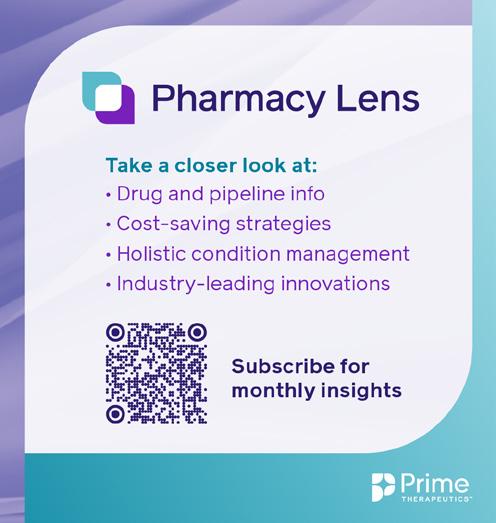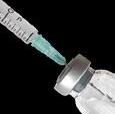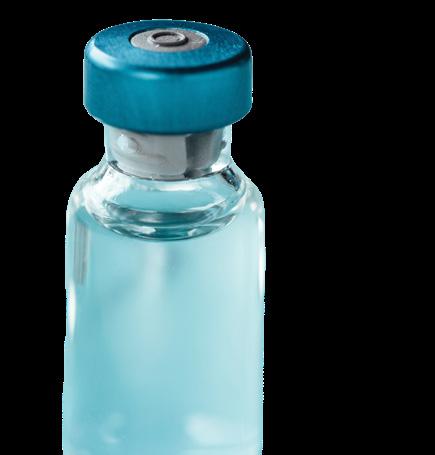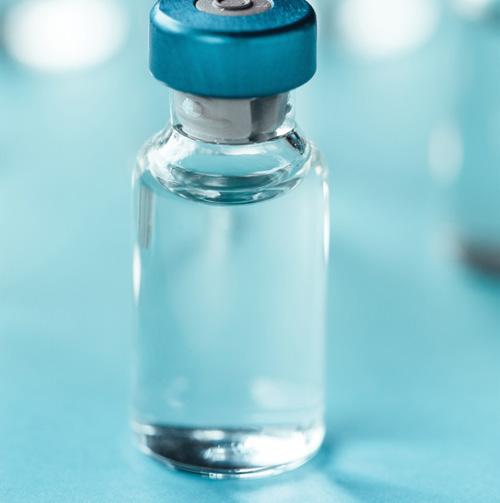
SPECIALTY SOLUTIONS FOR MANAGED CARE
Sept. 15–17, 2025
Sheraton Times Square
New York City



Sept. 15–17, 2025
Sheraton Times Square
New York City

You’re invited to the industry’s most dynamic specialty event, where you’ll connect with peers, hear from visionary leaders and have an opportunity to power change across pharmacy— and health care.






















Published By
Prime Therapeutics
2900 Ames Crossing Road Eagan, MN 55121 PrimeTherapeutics.com
Editor
Lindsay Speicher, J.D.
Sr. Project Manager, Specialty Lindsay.Speicher@PrimeTherapeutics.com
Advertising, Sales and Distribution
Lindsay Speicher, J.D. Sr. Project Manager, Specialty Lindsay.Speicher@PrimeTherapeutics.com
Joe Tavares
SVP, Sales and Business Development, Specialty Joe.Tavares@PrimeTherapeutics.com
Contributors
Steve Cutts, PharmD SVP, Specialty and Clinical Solutions
Haita Makanji, PharmD VP, Clinical Strategy and Innovation, Specialty
Shelae Cheng Principal, Brand Marketing Strategy
Joe Tavares
SVP, Sales and Business Development, Specialty
Simone Ndujiuba, PharmD, BCOP Sr. Director, Product Development, Oncology
Carole Kallas
Marketing Project Manager
Brian MacDonald, PharmD Sr. Director, Specialty Clinical Strategy and Programs
Alina Young Sr. Legal Counsel
Editorial Advisory Board
Mona Chitre, PharmD Chief Pharmacy Officer, Lifetime Healthcare Companies
Dennis Bourdette, M.D., FAAN, FANA Chair and Roy and Eulalia Swank Family Research Professor, Department of Neurology, Oregon Health & Science University
Yousaf Ali, M.D., FACR Chief, Division of Rheumatology, Mount Sinai St. Luke's and Mount Sinai West Professor of Medicine, Icahn School of Medicine at Mount Sinai
Steven L. D’Amato, B.S.Pharm. Founding Partner, Scientia Pharmacy Advisors
Joseph Mikhael, M.D., M.Ed., FRCPC, FACP Chief Medical Officer, International Myeloma Foundation
Steve Marciniak, RPh President, ClarityRX
Saira A. Jan, M.S., PharmD VP and Chief Pharmacy Officer, Horizon Blue Cross Blue Shield of New Jersey


Dear managed care colleagues,
Welcome to the summer 2025 issue of our Prime Therapeutics Report! This year is off to an exciting start, with 17 novel drug approvals so far and many more in the pipeline for the rest of the year. As always, we’re dedicated to bringing our readers the most timely information to keep you ahead of the curve.
Our cover story (Page 12) focuses on human immunodeficiency virus (HIV). We delve into the treatment landscape, including updates for pre-exposure prophylaxis (PrEP) and nonoccupational postexposure prophylaxis (nPEP). With upcoming approvals in this area, there are exciting updates on the horizon.
We also discuss Duchenne muscular dystrophy (DMD) and new advances in the treatment category. With several new approvals and more anticipated throughout 2025, payers may want to pay special attention to managing this space.
This issue also includes an update on biosimilars, a look into ophthalmic anti-vascular endothelial growth factor (anti-VEGF) agents and advances in transthyretin amyloid cardiomyopathy (ATTR-CM) treatment. As always, we’ve rounded out the issue with pipeline information and our managed care newsstand.
To learn more about how we’re supporting transformative payer initiatives, please feel free to contact us at PTReport@PrimeTherapeutics.com. We value any feedback you may have. Enjoy the report!
Sincerely,

Steve Cutts, PharmD SVP, Specialty and Clinical Solutions Prime Therapeutics
On May 22, 2025, the U.S. House of Representatives narrowly passed H.R. 1, the “One Big Beautiful Bill Act,” which includes significant PBM (pharmacy benefit manager)-related provisions:
• Delinking PBM compensation: Prohibits PBMs and their affiliates from receiving compensation tied to drug prices, rebates or utilization metrics in Medicare Part D
• Medicaid spread-pricing ban: Mandates pass-through reimbursement models in Medicaid, aligning payments with the National Average Drug Acquisition Cost plus a professional dispensing fee
• Increased transparency: Requires public disclosure of pharmacy reimbursement rates and enhances audit rights for plan sponsors
The bill also includes significant Medicaid changes:
• Work requirements: Introduces mandatory work requirements for certain Medicaid recipients, potentially affecting eligibility and coverage
• Funding reductions: Recommends significant cuts to Medicaid funding (estimates suggest an approximate $700 billion reduction over the next decade)
• Eligibility verification: Increases frequency of eligibility checks for Medicaid beneficiaries, which may lead to disenrollment for some individuals
• Cost-sharing requirements: Provides new cost-sharing obligations, including premiums and copays, for Medicaid enrollees with incomes above the federal poverty level
• Coverage restrictions for immigrants: Reduces the federal Medicaid matching rates from 90% to 80% for states that provide coverage to certain immigrant groups, particularly undocumented immigrants
• Retroactive coverage: Reduces retroactive coverage to one month, meaning Medicaid would only cover medical expenses incurred in the month immediately preceding the application
The bill now moves to the Senate, where its future is uncertain due to internal divisions among Senate Republicans and opposition from Democrats.
On May 13, 2025, the Senate Judiciary Committee conducted a hearing titled “PBM Power Play: Examining Competition Issues in the Prescription Drug Supply
Chain.” The session focused on the role of PBMs in the pharmaceutical industry, and bipartisan concerns were raised about their market influence and practices.
On April 15, 2025, President Donald Trump issued an executive order aimed at reducing prescription drug prices, which includes two provisions that may directly impact PBMs and the employers and plan sponsors they serve.
• Increased fee transparency for employer plans: The order directs the Department of Labor to propose new regulations requiring PBMs to disclose all direct and indirect compensation they receive in connection with employer-sponsored health plans. This could lead to greater scrutiny of PBM fee arrangements and how they impact overall plan costs.
• Review of PBM roles in the drug supply chain: The White House has ordered a federal review of “middlemen” and other intermediaries to promote a more competitive and transparent drug pricing system. While the term “middlemen” is broadly used, in the policy context, it commonly includes PBMs, wholesalers and sometimes GPOs. Future reforms
could target how PBMs negotiate rebates, structure formularies, or interact with manufacturers and pharmacies.
On May 12, 2025, President Trump signed an executive order titled “Delivering Most-Favored-Nation Prescription Drug Pricing to American Patients.” This order aims to align U.S. drug prices with those in other developed countries by directing the Department of Health and Human Services (HHS) to set price targets for brand-name drugs without generic or biosimilar competition. The administration expects pharmaceutical manufacturers to voluntarily adjust prices. If significant progress is not made, further actions such as rulemaking, enforcement and potential revocation of product approvals may be pursued.
In April 2025, the Trump administration initiated a Section 232 investigation into the national security implications of important pharmaceuticals. This investigation could lead to significant tariffs on imported pharmaceutical products and aims to encourage domestic manufacturing and reduce reliance on foreign supply chains. While no specific tariffs have been implemented yet, the administration has signaled a strong intent to impose such measures.
The Office of Management and Budget issued a request for information on April 11, 2025,
seeking public input on federal regulations that may be outdated or unnecessary. This initiative, part of a broader deregulatory agenda, invites stakeholders to suggest regulations for repeal, potentially impacting health care and pharmaceutical sectors.
On April 4, CMS finalized the Contract Year 2026 MA and Part D rule, incorporating several Inflation Reduction Act (IRA) provisions, including insulin and vaccine cost-sharing changes and automatic renewal under the Medicare Prescription Payment Plan. Importantly, CMS declined to finalize a proposal to expand Medicare and Medicaid coverage of anti-obesity medications, following industry pushback.
CMS also held back on proposals that would have required PBMs to notify pharmacies of their in-network plans for the upcoming year or permit pharmacies to terminate their PBM contracts without cause.
On April 10, CMS released the 2026 Medicare Advantage and Part D Rate Announcement. It finalizes a 4.27% annual percentage increase, sets the 2026 deductible at $615 and increases the out-of-pocket maximum to $2,100. CMS also adopted risk adjustment updates aligned with IRA provisions and confirmed the use of separate normalization factors for Medicare
Advantage Prescription Drug programs and Prescription Drug Plans.
The agency deferred final details of the Biden-era Part D Premium Stabilization Program until after 2026 bids are submitted.
Coverage of certain preventive services under the Affordable Care Act
President Trump signed an executive order (EO) on Feb. 25 to strengthen health care price transparency, reviving a regulatory push from his first term. The EO directs the departments of Labor, HHS and Treasury to act within 90 days to expedite implementation and enforcement of provisions outlined in the 2020 Transparency in Coverage Final Rule. This includes new disclosure mandates for in-network rates, out-of-network billing and prescription drug pricing.
Marketplace integrity and affordability proposed rule
Released on March 10, the proposed rule introduces changes aimed at curbing fraud and reducing subsidy overpayments. Notably, the proposal would eliminate $0 premium automatic reenrollments by requiring a $5 monthly premium unless eligibility is actively confirmed. It would also allow insurers to condition future enrollment on the repayment of unpaid premiums from prior years. The annual open enrollment period has been shortened from the current period (Nov. 15–Jan. 1) by one month to Nov. 15–Dec. 15.


Mike Harvey, PharmD Director of Pharmacy
AultCare Pharmacy
Duchenne muscular dystrophy (DMD) is a rare genetic condition that causes progressive weakness and muscle wasting.1 It is the most common form of muscular dystrophy and affects about 1 in 3,600 male live-born infants.1 DMD mainly affects children who are assigned male at birth, and symptoms of muscle weakness typically appear by ages 2–4.1
Common DMD symptoms include progressive muscle weakness and atrophy that begin in the child’s legs and pelvis and occur less severely in the arms, neck and other areas; calf muscle hypertrophy; difficulty climbing stairs; difficulty walking that worsens over time; frequent falls; waddling gait; toe walking; and fatigue.1 DMD can also manifest in symptoms such as cardiomyopathy, breathing difficulties, cognitive impairment and learning differences, delayed speech and language development, developmental delay, scoliosis, and short stature.1
If, after a physical, neurological and muscle exam, a provider suspects DMD, they will typically order a creatine kinase blood test, a genetic blood test, a muscle biopsy and/or an electrocardiogram.1


Therapies used to treat DMD focus on managing symptoms and improving quality of life.1 These supportive therapies include corticosteroids, medication to treat cardiomyopathy (ACE inhibitors and/or beta blockers), physical therapy, surgery to help treat scoliosis and contractures, and exercise.1
The U.S. Food and Drug Administration (FDA) has approved treatments that employ exon skipping (casimersen [Amondys 45], eteplirsen [Exondys 51], viltolarsen [Viltepso] and golodirsen [Vyondys 53]); however, these are only appropriate for a minority of cases with very specific mutations.1
Delandistrogene moxeparvovec-rokl (Elevidys)
In 2023, the FDA granted accelerated approval to delandistrogene moxeparvovec-rokl (Elevidys), the first gene therapy for the treatment of pediatric patients ages 4–5 with a confirmed DMD gene mutation who do not have a pre-existing medical reason not to use the
Elevidys’ accelerated approval was based on data submitted from a two-part study.
therapy.2 Delandistrogene moxeparvovec is a recombinant gene therapy designed to deliver into the body a gene that leads to production of Elevidys micro-dystrophin, a shortened protein that contains selected domains of the dystrophin protein present in normal muscle cells.2 This treatment is administered via a single intravenous dose.2
Elevidys’ accelerated approval was based on data submitted from a two-part study. In Part 1, individuals were treated with either delandistrogene moxeparvovec or placebo and followed for 48 weeks.3 In Part 2, individuals who received the placebo during Part 1 were then treated with delandistrogene moxeparvovec, and individuals who received the treatment in Part 1 then received a placebo; all were then followed for an additional 48 weeks.3
Data from the randomized clinical trial established that delandistrogene moxeparvovec increased the expression of the Elevidys micro-dystrophin protein observed in the treated 4- to 5-year-old individuals with DMD.3 Ultimately, the FDA concluded this data demonstrated that an increase in this surrogate endpoint is reasonably likely to predict clinical benefit.3
In 2025, delandistrogene moxeparvovec received expanded approval and can now be used to treat both ambulatory and non-ambulatory children assigned male at birth ages 4 and up with DMD.4 The previous accelerated approval covered only ambulatory children assigned male at birth between 4 and 5 years old.4 In the Phase 3 EMBARK study, the drug did not meet its primary objective, demonstrating a non-significant increase on the North Star Ambulatory Assessment at 52 weeks compared to placebo.4,5
Additionally, the therapy failed a key efficacy endpoint: It was unable to outperform the placebo in improving patients’ functional performance.4,5 According to the FDA, the decision to expand the approval and broaden the label for delandistrogene moxeparvovec was based on “the totality of the evidence, including the potential risks associated with the product, the life-threatening and debilitating nature of the disease, and the urgent unmet medical need.”4

Common side effects reported with delandistrogene moxeparvovec were vomiting, nausea, acute liver injury, pyrexia and thrombocytopenia.4 Liver function should be monitored before patients receive delandistrogene moxeparvovec and monitored weekly for the first three months after treatment.4 The therapy also carries the risk of severe immune-mediated myositis, myocarditis and elevated troponin-I levels.4
In the first quarter of 2024, the FDA approved givinostat (Duvyzat) to treat DMD patients ages 6 and older.6 Givinostat is an oral histone deacetylase (HDAC) inhibitor
In the first quarter of 2024, the FDA approved givinostat (Duvyzat) to treat DMD patients ages 6 and older.
that targets pathogenic processes to reduce inflammation and loss of muscle and is the first nonsteroidal drug approved to treat patients with all genetic variants of DMD.6
Givinostat’s efficacy was evaluated in a randomized, double-blind, placebo-controlled, 18-month Phase 3 study, in which the primary endpoint was the change from baseline to Month 18 using a four-stair climb to measure muscle function.7 Study participants continued to receive a standard of care steroid regimen throughout the study.7 After 18 months of treatment, patients who received givinostat showed a statistically significant decline in the time it took to climb four stairs compared to those who received the placebo.7 For patients who receieved givinostat, the mean change from baseline to Month 18 in the time it took to climb four stairs was 1.25 seconds compared to 3.03 seconds for patients who received the placebo.7 Patients treated with givinostat saw less worsening in the North Star Ambulatory Assessment after 18 months compared to those who received the placebo.7
Common side effects associated with givinostat include diarrhea, abdominal pain, a decrease in platelets, nausea and vomiting, an increase in triglycerides, and fever.6 Givinostat comes with warnings that health care providers should evaluate the patient’s platelet counts and triglycerides before prescribing givinostat.6 Givinostat is not appropriate for patients with a platelet count lower than 150 x 109/L.6 Providers should monitor patient platelet counts and triglycerides during treatment in order to determine whether dosage changes are required.6
Givinostat launched in July 2024 with an average annual cost of $700,000 based on the typical patient studied in the clinical trial.8 ITF Therapeutics is offering ITF Access, Resources and Care (ARC), including services to help patients and families navigate insurance challenges, personalized pharmacist support, financial and access assistance for eligible patients, educational materials, and other resources.8
The FDA is expected to make an approval decision on deramiocel in the second half of 2025.9 Three-year safety and efficacy results from the ongoing HOPE-2 open-label extension study demonstrated improvements in multiple cardiac measures, including left ventricular ejection fraction as well as indexed volumes and left ventricular and diastolic volume.9 Researchers also observed greater cardiac function improvements in patients who had higher ejection fractions (> 45%) at the beginning of the HOPE-2 randomized trial.9 Patients showed a statistically significant benefit in the PUL v2.0 total score compared to an external comparator dataset of similar DMD patients.9
There is currently no treatment approved specifically for DMD cardiomyopathy, underscoring the need for additional therapies in this space.9
After receiving a Complete Response Letter from the FDA, PTC Therapeutics has resubmitted a new drug application (NDA) to the FDA for ataluren (Translarna) for the treatment of nonsense mutation DMD. The FDA is currently reviewing the NDA.10 Resubmission is based on findings from the global placebo-controlled trial Study

041.10 After 72 weeks of ataluren treatment, patients demonstrated significant benefit on six-minute walk distance, NorthStar Ambulatory Assessment, 10-meter walk/run, four-stair climb, and time to 10% worsening of six-minute walk distance.10
Treatments approved via the FDA accelerated-approval pathway come with challenges. The lack of long-term study data associated with accelerated approvals leads to uncertainty among payers.11
In a recent survey, 90% of payers reported that clinical trial data on safety and efficacy is essential to their review process, specifically noting an interest in the drug’s safety data and potential cost impacts.11 Survey results showed most payers (70%) are at least moderately concerned about the reduced number of required clinical trials for many expedited drugs, noting uncertainties about the scarcity and validity of available data.11
It is difficult to assess the value of therapies for rare diseases. For chronic rare diseases such as DMD, cost management strategies focus on policies outside of the benefit, such as stop-loss or reinsurance.12 Ultimately, it is critical for patients with rare diseases to receive the
appropriate treatment at the right time.12 This means payers must determine how patients can receive coverage and access to the appropriate treatment.12 The input of medical specialists or key opinion leaders is often important to determining appropriate treatment and rationalizing costs.12
ataluren (Translarna) PTC Therapeutics
(CAP-1002)
2025) DYNE-251
delpacibart zotadirsen (AOC 1044)
brogidirsen (NS-089)
(EDG-5506)
ifetroban (Boxaban)
bocidelpar (ASP0-0367)
1. Duchenne Muscular Dystrophy (DMD). Cleveland Clinic. Published June 2, 2025. https://my.clevelandclinic.org/health/ diseases/23538-duchenne-muscular-dystrophy-dmd
2. FDA approves first gene therapy for treatment of certain patients with Duchenne muscular dystrophy. (2023, June 22). U.S. Food and Drug Administration. https:// www.fda.gov/news-events/press-announcements/ fda-approves-first-gene-therapy-treatment-certainpatients-duchenne-muscular-dystrophy
3. Sarepta Therapeutics’ investigational gene therapy SRP9001 for Duchenne muscular dystrophy demonstrates significant functional improvements across multiple studies | Sarepta Therapeutics, Inc. Sarepta Therapeutics, Inc. https://investorrelations.sarepta.com/news-releases/ news-release-details/sarepta-therapeuticsinvestigational-gene-therapy-srp-9001
4. Taylor P. Sarepta bags key expansion to DMD gene therapy label in US. Pharmaphorum. Published June 21, 2024. https://pharmaphorum.com/news/sarepta-bagskey-expansion-dmd-gene-therapy-label-us
5. Mendell JR, Muntoni F, McDonald CM, et al. AAV gene therapy for Duchenne muscular dystrophy: the EMBARK phase 3 randomized trial. Nature Medicine. Published online October 9, 2024. doi:10.1038/s41591-024-03304-z
6. Office of the Commissioner. FDA approves nonsteroidal treatment for Duchenne muscular dystrophy. U.S. Food And Drug Administration. Published March 21, 2024. https://www.fda.gov/news-events/ press-announcements/fda-approves-nonsteroidaltreatment-duchenne-muscular-dystrophy
7. Mercuri E, Vilchez JJ, Boespflug-Tanguy O, et al. Safety and efficacy of givinostat in boys with Duchenne muscular dystrophy (EPIDYS): a multicentre, randomised, double-blind, placebo-controlled, phase 3 trial. The Lancet Neurology. 2024;23(4):393-403. doi:10.1016/ s1474-4422(24)00036-x
8. Watch F. Nonsteroidal Drug for Duchenne Launches with a $700,000 Price Tag. Managed Healthcare Executive. https://www.managedhealthcareexecutive.com/view/ nonsteroidal-drug-for-duchenne-launches-with-a-700000-price-tag. Published January 27, 2025.
9. Capricor Therapeutics announces Long-Term benefit of deramiocel (CAP-1002) in both skeletal muscle and cardiac function in the HOPE-2 OLE study in Duchenne Muscular Dystrophy. Capricor Therapeutics, Inc. Published June 28, 2024. https://www.capricor.com/ investors/news-events/press-releases/detail/284/ capricor-therapeutics-announces-long-term-benefit-of
10. PTC Therapeutics announces FDA acceptance of TranslarnaTM NDA resubmission | PTC Therapeutics, Inc. PTC Therapeutics, Inc. https://ir.ptcbio.com/ news-releases/news-release-details/ptc-therapeuticsannounces-fda-acceptance-translarnatm-nda
11. Zele BC. Payer Coverage of Fast-Tracked Therapies: A Cautionary Tale - MMIT. MMITNetwork. Published November 2, 2023. https://www.mmitnetwork.com/ thought-leadership/payer-coverage-of-fast-trackedtherapies-a-cautionary-tale/
12. Rare Disease: Access, Reimbursement, and Disease Management A Stakeholder Interchange report. AJMC. https://www.ajmc.com/view/ rare-disease-access-reimbursement-and-diseasemanagement-a-stakeholder-interchange-report. Published February 3, 2022.


Eddy Ekobena, PharmD, MBA Manager of Pharmacy Services
Avera Health Plans
An estimated 1.2 million people in the United States live with human immunodeficiency virus (HIV).1 Approximately 31,800 individuals in the United States acquired HIV in 2022, which represents a 12% decrease in new infections from 36,300 in 2018.1
U.S. Department of Health and Human Services (HHS) guidelines currently recommend antiretroviral therapy (ART) for HIV, which patients should begin as soon as possible after diagnosis to slow progression.2 There are seven ART classes: nucleoside reverse transcriptase inhibitors (NRTIs), non-nucleoside reverse transcriptase inhibitors (NNRTIs), protease inhibitors, fusion inhibitors, CCR5 antagonists, post-attachment inhibitors and integrase strand inhibitors (INSTIs).2
There have been incremental improvements in potency, tolerability, safety, convenience, drug interactions and genetic barriers to the emergence of drug resistance, which have led to streamlined recommendations for initial ART regimens for most individuals with HIV.2 The guidelines now recommend initial ART regimens based on an oral second generation INSTI plus two NRTI for most individuals with HIV.2
Pre-exposure prophylaxis (PrEP) is an HIV-prevention strategy recommended by the U.S. Centers for Disease Control and Prevention (CDC).3 There are currently two therapies
There are three phases to appropriate care using PrEP: screening, PrEP initiation and follow-up.
approved by the U.S. Food and Drug Administration (FDA) for daily use as HIV PrEP: emtricitabine and tenofovir disoproxil fumarate (Truvada) and emtricitabine and tenofovir alafenamide (Descovy). Adherence to PrEP medication as prescribed can reduce the risk of contracting HIV via sexual conduct and drug injection by 99% and 74%, respectively.3
There are three phases to appropriate care using PrEP: screening, PrEP initiation and follow-up.3 The initial screening should include engagement through HIV risk assessment and PrEP education as well as an initial clinical evaluation, including an assessment of indications for PrEP, a brief medical history and appropriate lab work.3
PrEP initiation should occur within seven days of the screening and include a review of PrEP basics and a prescription for PrEP for 90 days or less. Follow-up should be consistent, occuring every three months, and include an HIV blood test; a symptom review; concurrent PrEP prescription; and assessment and counseling for HIV risk behavior, adherence and pregnancy intent. Follow-up testing for sexually transmitted infections and kidney function should occur every six months.3
In May 2025, the CDC issued new recommendations for nonoccupational post-exposure prophylaxis (nPEP), including guidelines for two different preferred nPEP regimens for adults and adolescents.4 The recommendations include an alternative regimen of darunavir and cobicistat OR darunavir and ritonavir PLUS (tenofovir alafenamide OR tenofovir disoproxil fumarate) PLUS (emtricitabine OR lamivudine).4 Treatment duration is 28 days, and providers still recommend nPEP for anyone with a substantial risk for HIV exposure as soon as possible (but no later than 72 hours) following sexual contact or injection drug use.4


Your source for the latest drug information highlights


Drug resistance testing helps determine whether an individual with HIV has a mutated form of the virus that will not respond to ART.5 Specifically, genotypic drug resistance testing examines the genotype of a patient’s virus to detect the presence of specific genetic mutations that are known to cause ART resistance.5
Adherence and single-tablet regimen versus multiple-tablet regimen
It’s critical that patients adhere to a treatment regimen to maintain viral suppression; poor treatment adherence is associated with less effective viral suppression.6, 7 The adherence thresholds vary between different ART classes. However, improved outcomes, including viral suppression and, in some cases, reducing the risk of resistance mutations, are associated with higher adherence levels.7
The introduction of single-tablet regimen (STR) options has increased HIV patient adherence and resulted in lower pharmacy costs and hospitalization rates compared to existing multiple-tablet regimens (MTR).8, 9
It’s critical that patients adhere to a treatment regimen to maintain viral suppression; poor treatment adherence is associated with less effective viral suppression.
In an analysis of patients initiating ART, patients on STR were more than twice as likely to be regimen-adherent compared to MTR patients.7 Persistence was more common among STR patients, because MTR patients were 61% more likely to discontinue treatment.7

Drug Manufacturer Route of
bictegravir; lenacapavir FDC Gilead Sciences
islatravir; lenacapavir FDC
Merck & Co.; Gilead Sciences
GS-1720; GS-4182 FDC Gilead Sciences
leronlimab (PRO 140) CytoDyn
clade C + mosaic gp140 (HIV vaccine) Johnson & Johnson
islatravir (MK-8591)
Merck & Co.
cenicriviroc (TBR 652) Tobira Therapeutics; Takeda Pharmaceuticals
UB-421 United BioPharma
3BNC117 Frontier Pharmaceutical IV
reverse transcriptase translocation
inhibitor; HIV capsid inhibitor Phase 3
3
reverse transcriptase translocation
3
2
antibodies Phase 2 albuvirtide Frontier Pharmaceutical IV Fusion inhibitor Phase 2
Abbreviations: IM = intramuscular; IV = intravenous; NNRTI = non-nucleoside reverse transcriptase inhibitor; SC = subcutaneous
In June 2025, the FDA approved lenacapavir (Yeztugo, Gilead Sciences), an injectable HIV-1 capsid inhibitor, as PrEP to reduce the risk of sexually acquired HIV in adults and adolescents weighing at least 35 kilograms.10 This marks the first and only twice-yearly option available in the United States.10
Data from the Phase 3 PURPOSE 1 and PURPOSE 2 trials showed that more than 99.9% of participants who received lenacapavir remained negative.10
In March 2025, Merck announced positive data from Phase 3 trials showing the investigational once-daily, oral, two-drug regimen of doravirine/islatravir (DOR/ ISL) maintained HIV-1 viral suppression at week 48.11 Two Phase 3 trials assessed DOR/ISL in adults with HIV-1 infection that is virologically suppressed on bictegravir/ emtricitabine/tenofovir alafenamide (BIC/FTC/TAF) in trial MK-8591A-052 or antiretroviral therapy in trial MK-8591A-051.11 In two Phase 3 trials, DOR/ISL met the primary efficacy success criterion for non-inferiority to comparator antiretroviral therapies and primary safety objectives at Week 48.11 Results from the double-blind MK-8591A-052 trial showed 1.5% of participants who switched to DOR/ISL had a viral load of >50 copies/mL at Week 48 compared to 0.6% on BIC/FTC/TAF.11 Then,
at Week 48, 91.5% of participants who switched to DOR/ ISL maintained viral suppression compared to 94.2% of participants who continued receiving BIC/FTC/TAF.11
The safety profile of DOR/ISL was generally comparable to the comparator antiretroviral regimens across both trials. At Week 48, the mean percentage change in total lymphocyte and CD45 counts were similar.11 Researchers observed no treatment-emergent resistance to DOR or ISL in either trial.11
Research shows that the expansion of Medicaid under the Affordable Care Act (ACA) brought an increased rate in the identification of undiagnosed HIV infections and use of HIV prevention services; an estimated 13.9% increase in HIV diagnoses was associated with Medicaid expansion, according to data from the University of Illinois.12
This shift, along with appropriate treatment and use of preventive services, was linked directly to improved care access through Medicaid, since diagnoses were most common in populations likely affected by Medicaid expansion, including low-income individuals from rural counties with high uninsured rates prior to the ACA who engage in injection drug use.12 The data suggests access


to health insurance and proper care improved HIV testing rates and use of preventive care, increasing the rate of individuals living with HIV.12 Access to care and proper management for patients with HIV are critical factors when it comes to improving outcomes.12
In September 2024, the Centers for Medicare and Medicaid Services issued a National Coverage Determination (NCD) that provided PrEP coverage through Medicare Part B. The NCD addressed both oral and injectable forms of PrEP.13 This may create a barrier to access to oral forms of PrEP, which were previously covered under Part D and available at retail pharmacies.13 While many Part B payers provided access to injectable PrEP before the NCD, designating PrEP as a preventive service guarantees coverage for Medicare Part B members with no cost sharing.13
Payers can manage costs by incentivizing and steering patients toward lower-cost generic alternatives. Combination therapies have created an opportunity to combine several generic therapies where brand-only therapies were previously utilized. Strong policy will be key to driving generic utilization in this space. By prioritizing the HIV population, payers can also better manage the category. Focused measures to increase HIV patients’ treatment adherence can lead to lower costs overall, including pharmacy and hospitalizations.14
Prime offers support solutions across medical and pharmacy benefit, including the HighTouchRx® program, which has helped drive more than $2 million in drug savings across categories, including HIV. Additionally, Prime offers PrEP education materials to support clinicians as well as broad access to HIV medications, formulary coverage for HIV medications and select HIV PrEP products as a $0 member cost-share category.
With an expanding pipeline and new approvals on the horizon, payers may manage costs by encouraging adherence and implementing appropriate management strategies.
1. U.S. statistics. HIV.gov. https://www.hiv.gov/hiv-basics/ overview/data-and-trends/statistics
2. Helfand, M. What’s new in U.S. HIV clinical treatment guidelines. TheBodyPro. https://www.thebodypro.com/ article/whats-new-in-the-us-hiv-clinical-guidelines.
3. Preventing HIV with PrEP. HIV. Published January 18, 2024. https://www.cdc.gov/hiv/prevention/prep.html
4. Tanner MR, O’Shea JG, Byrd KM, et al. Antiretroviral postexposure prophylaxis after sexual, injection drug use, or other nonoccupational exposure to HIV — CDC Recommendations, United States, 2025. MMWR Recommendations and Reports. 2025;74(1):1-56. doi:10.15585/mmwr.rr7401a1
5. HIV drug resistance testing. (n.d.) Stanford Health Care. https://stanfordhealthcare.org/medical-conditions/ sexual-and-reproductive-health/hiv-aids/treatments/ hiv-drug-resistance-testing.html
6. Schaecher, K. (2013, September 29). The importance of treatment adherence in HIV. American Journal of Managed Care. 19(12), (Sup.). https://www.ajmc.com/view/ a472_sep13_schaecher_s231
7. Hines DM, Ding Y, Wade RL, Beaubrun A, Cohen JP. Treatment Adherence And Persistence Among HIV-1 Patients Newly Starting Treatment Patient Preference and Adherence. 2019;Volume 13:1927-1939. doi:10.2147/ppa. s207908
8. Cohen CJ, Meyers JL, Davis KL. Association between daily antiretroviral pill burden and treatment adherence, hospitalisation risk, and other healthcare utilisation and costs in a US Medicaid population with HIV. BMJ Open. https://bmjopen.bmj.com/content/3/8/e003028
9. Langness J, Cook PF, Gill J, Boggs R, Netsanet N. Comparison of adherence rates for antiretroviral, blood pressure, or mental health medications for HIV-Positive patients at an academic medical center outpatient pharmacy. Journal of Managed Care Pharmacy. 2014;20(8):809-814. doi:10.18553/jmcp.2014.20.8.809
10. Yeztugo® (Lenacapavir) is now the first and only FDAapproved HIV prevention option offering 6 months of protection. (2025, June 18). Gilead. https://www.gilead. com/news/news-details/2025/yeztugo-lenacapavir-isnow-the-first-and-only-fda-approved-hiv-preventionoption-offering-6-months-of-protection
11. Merck Announces Positive Data from Phase 3 Trials that Show the Investigational, Once-Daily, Oral, Two-Drug Regimen of Doravirine/Islatravir (DOR/ISL) Maintained HIV-1 Viral Suppression at Week 48 - Merck.com. Merck. com. Published June 5, 2025. https://www.merck.com/ news/merck-announces-positive-data-from-phase3-trials-that-show-the-investigational-once-dailyoral-two-drug-regimen-of-doravirine-islatravir-dorisl-maintained-hiv-1-viral-suppression-at-week-48/
12. Nelson, H. (2021, January 27). Medicaid expansion helped detect undiagnosed HIV infections. Health Payer Intelligence. https://healthpayerintelligence.com/news/ medicaid-expansion-helpeddetect-undiagnosed-hivinfections
13. NCD - Pre-Exposure Prophylaxis (PREP) for Human Immunodeficiency virus (HIV) Prevention (210.15). https:// www.cms.gov/medicare-coverage-database/view/ncd. aspx?ncdid=377
14. Hirsch JD, Rosenquist A, Best BM, Miller TA, Gilmer TP. Evaluation of the first year of a pilot program in community Pharmacy: HIV/AIDS medication therapy management for Medi-Cal beneficiaries. Journal of Managed Care Pharmacy. 2009;15(1):32-41. doi:10.18553/jmcp.2009.15.1.32


Carly Rodriguez, PharmD, FAMCP VP and Chief Pharmacy Officer
Moda Health
Retinal diseases are often treated with anti-vascular endothelial growth factor (VEGF) agents.1 VEGF is a protein that produces new blood vessels.1 When cells produce excess VEGF, abnormal blood vessels can grow in the eye, causing damage and harming vision.1 Anti-VEGF agents can slow or stop the damage from these abnormal blood vessels, thus delaying vision loss and sometimes improving vision.1
Anti-VEGF treatments that have been widely adopted for use by ophthalmologists include bevacizumab (Avastin), ranibizumab (Lucentis) and aflibercept (Eylea).1 Eye conditions treated with anti-VEGF agents include age-related macular degeneration (AMD), diabetic macular edema (DME), diabetic retinopathy (DR) and macular edema (ME) following retinal vein occlusion (RVO).1
Recent developments in the anti-VEGF space have focused on biosimilars. Several biosimilars have gained U.S. Food and Drug Administration (FDA) approval in recent years, with many others expected to follow.
Much of the activity in the anti-VEGF category is composed of biosimilars, with new approvals and candidates for ranibizumab, aflibercept and bevacizumab biosimilars on the horizon.
Drug Manufacturer
ranibizumab (Lucentis) Genentech
ranibizumab-nuna (Byooviz)*
ranibizumab-eqrn (Cimerli)*
faricimab-svoa (Vabysmo)
pegaptanib sodium (Macugen)
aflibercept (Eylea)r
aflibercept 8 mg high dose (Eylea HD®)
aflibercept-jbvf (Yesafili)*
aflibercept-yszy (Opuviz)*
Biogen
Coherus BioSciences
Genentech
Eyetech Pharmaceuticals; Pfizer
Regeneron Pharmaceuticals
Regeneron Pharmaceuticals
Viatris; Biocon Biologics
Samsung Bioepis
aflibercept-abzv (Enzeevu)* Sandoz
aflibercept-ayyh (Pavblu)* Amgen
aflibercept-mrbb (Ahzantive)*
Formycon
brolucizumab (Breovu) Novartis
bevacizumab (Avastin)
Genentech
Indication
nAMD; ME following RVO; DME; DR; mCNV
nAMD; ME following RVO; mCNV
nAMD; ME following RVO; DME; DR; mCNV
nAMD; DME; ME following RVO
nAMD
nAMD; ME following RVO; DME; DR; ROP
nAMD; DME; DR
nAMD; ME following RVO; DME; DR
nAMD; ME following RVO; DME; DR
nAMD
nAMD; ME following RVO; DME; DR
nAMD; ME following RVO; DME; DR
nAMD
Bevacizumab (reference or biosimilars) is not currently approved by the FDA for any ophthalmic indications
Abbreviations: DME = diabetic macular edema; DR = diabetic retinopathy; mCNV = myopic choroidal neovascularization; ME = macular edema; nAMD = neovascular age-related macular degeneration; ROP = retinopathy or prematurity; RVO = retinal vein occlusion *Biosimilar
Ranibizumab
Several ranibizumab biosimilars are approved or in development in the United States.2 Ranibizumab-nuna (Byooviz) was the first FDA-approved ranibizumab biosimilar and was approved to treat neovascular AMD (nAMD), ME following RVO and myopic choroidal neovascularization in 2021.2 The FDA then approved ranibizumab-eqrn (Cimerli) — which is indicated for nAMD, ME following RVO, DME, diabetic retinopathy and myopic choroidal neovascularization (mCNV) — in 2022.2 Both Byooviz and Cimerli have interchangeability status after meeting FDA safety, efficacy and quality standards to the reference product.3
The FDA approved five biosimilars for aflibercept in 2025: aflibercept-jbvf (Yesafili), aflibercept-yszy (Opuviz), aflibercept-mrbb (Ahzantive), aflibercept-abzv (Enzeevu) and aflibercept-ayyh (Pavblu).4 More aflibercept biosimilars are in various stages of development, including Phase 3 trials and FDA review.
While three biosimilars for bevacizumab are available in the United States, none are approved for intraocular use. However, there are potential biosimilar bevacizumab candidates in the pipeline slated for FDA review and approval with ophthalmic indications.
A ranibizumab biosimilar (Xlucane), in development by Xbrane Biopharma, is slated for an FDA determination in June 2025.5 Results from a comprehensive comparative analytical assessment compared the ranibizumab biosimilar to the reference drug. Positive data from a randomized, double-masked, multicenter study evaluating efficacy, safety, pharmacokinetics and immunogenicity supported the FDA filing.5 The ranibizumab biosimilar candidate met the primary endpoint by demonstrating equivalent efficacy in the improvement in best correct visual acuity (BCVA) at Week 8 compared to the reference product.5 Additionally, there were no clinically meaningful differences in secondary endpoints (pharmacokinetic, safety and immunogenicity).5

Bevacizumab-vikg (Lytenava) is a bevacizumab biosimilar in development from Outlook Therapeutics that is currently under review by the FDA.6 The application is anticipated to receive an approval determination in August 2025. This would be the first FDA approval for a bevacizumab agent for ophthalmic use.6
Results from the NORSE-3 Phase 3 clinical trial showed that Lytenava demonstrated noninferiority to ranibizumab.6 Notably, the FDA previously rejected an application for the biosimilar in August 2023, citing several chemistry, manufacturing and control issues and observations from pre-approval manufacturing inspections.6 The FDA also determined there was still an unmet need for further confirmatory clinical evidence.6 In January 2024, the NORSE EIGHT trial was launched to address these concerns. The trial included 400 treatment-naïve nAMD subjects randomized 1:1 to receive 1.25 mg bevacizumabvikg or 0.5 mg ranibizumab IVT injections.6
Lytenava was approved for nAMD in the European Union in May 2024 and in the United Kingdom in July 2024.6
The FDA is currently reviewing Alvotech’s AVT06 biosimilar aflibercept candidate, and an approval decision is expected by the end of 2025.7 Results from a confirmatory clinical study were positive, demonstrating therapeutic equivalence between the biosimilar and reference
product.7 The randomized, double-masked, parallel-group, multicenter, therapeutic equivalence study evaluated efficacy, safety and immunogenicity of AVT06 compared to the reference product.7 The study demonstrated therapeutic equivalence by meeting its primary endpoint: change in baseline to Week 8 in BCVA.7
The FDA is currently reviewing another aflibercept biosimilar candidate, Celltrion’s CT-P42.8 Results from a randomized, active-controlled, double-masked study evaluating efficacy and equivalence of the biosimilar to the reference product showed therapeutic equivalence in BCVA improvement.8 The biosimilar also demonstrated comparable efficacy, safety, pharmacokinetics and immunogenicity profiles to the reference product.8
A study assessed anti-VEGF utilization and cost trends for aflibercept, ranibizumab and bevacizumab among a Medicare population from 2014 through 2019.9 During this period, Medicare costs for anti-VEGF agents rose from $2.51 billion to $4.02 billion.9 Factors attributed to the 6.8-fold variation in 2019 utilization rates were the differences in ophthalmologist availability and average reimbursement amounts at the state level.9 There was a 7.3-fold difference in aflibercept use, a 231.9-fold difference in ranibizumab use and a 37.9-fold difference in bevacizumab use across all states and D.C.9
(Lytenava) Outlook Therapeutics
tarcocimab tedromer (KSI-301) Kodiak Sciences
Abbreviations:
Some provider education around ophthalmic antiVEGF biosimilars may be valuable in driving uptake, where appropriate.
Notably, while the population-adjusted aflibercept injection rate increased by 138% during the study period, the ranibizumab injection rate only marginally increased, while the bevacizumab injection rate slightly decreased.9 Aflibercept’s expanded indications likely contributed to the utilization increase.9
As highlighted in the 2024 Prime Therapeutics Medical Pharmacy Trend Report, ophthalmology continues to impact overall per member per month (PMPM) spend within commercial and Medicare lines of business (LOBs).10
In the ophthalmologic injection category, compounded bevacizumab remains the most cost-effective drug, which may lead to further cost management with the potential emergence of a bevacizumab biosimilar.10 The higher-cost agent faricimab (Vabysmo) is also slowly adding spend to the landscape. However, bevacizumab’s market share within both LOBs balances the incremental costs driven by Eylea, its biosimilars and Vabysmo.10
While biosimilar uptake has made small gains in this category, ranibizumab biosimilars have not made the same impact as biosimilars in other therapeutic categories.10 The influx of biosimilars has given rise to other challenges. Surveys suggest a majority of retina specialists feel they need more information and real-world data before incorporating biosimilars into their practice, citing safety, efficacy and immunogenicity.11 Some provider education around ophthalmic anti-VEGF biosimilars may be valuable in driving uptake, where appropriate.11 Ultimately, payer strategy will impact how biosimilars are utilized in the ophthalmic injection category.11
1. Anti-VEGF treatments. American Academy of Ophthalmology. Published July 26, 2023. https://www.aao. org/eye-health/drugs/anti-vegf-treatments
2. An update on the anti-VEGF biosimilar pipeline. Published January 10 ,2023. Review of Ophthalmology. https://www.reviewofophthalmology.zcom/article/ an-update-on-the-antivegf-biosimilar-pipeline
3. Joszt L MA. Byooviz gains interchangeability status. AJMC. https://www.ajmc.com/view/ byooviz-gains-interchangeability-status
4. Kirkner BRM, Specialist R. The year of biosimilars, and list goes well beyond 100. Jobson Medical Information LLC. Published February 28, 2025. https://www.retina-specialist.com/article/ the-year-of-biosimilars-and-list-goes-well-beyond-100
5. Xbrane announce U.S. FDA filing acceptance for a Lucentis® (ranibizumab) biosimi3lar candidate. https://xbrane.com/en/mfn_news/ xbrane-announce-u-s-fda-filing-acceptance-for-alucentis-ranibizumab-biosimilar-candidate
6. Crabbe J. Outlook reports Final results of Lytenava trial, Plans BLA resubmission in Q1-2025 | Market scope. Published January 31, 2025. https://www.market-scope. com/pages/news/8165/outlook-reports-final-results-oflytenava-trial-plans-bla-resubmission-in-q1-2025
7. Alvotech. Alvotech Clinical Study Results Demonstrate Therapeutic Equivalence between Biosimilar Candidate AVT06 and Reference Product Eylea® (aflibercept). GlobeNewswire News Room. https://www.globenewswire. com/news-release/2024/01/03/2803066/0/en/ Alvotech-Clinical-Study-Results-DemonstrateTherapeutic-Equivalence-between-Biosimilar-CandidateAVT06-and-Reference-Product-Eylea-aflibercept.html. Published January 3, 2024.
8. Wolf S, Stanga PE, Veselovsky M, et al. Biosimilar candidate CT-P42 in diabetic macular edema. Ophthalmology Retina. 2024;8(12):1163-1173. doi:10.1016/j. oret.2024.06.013
9. Staff B. Annual Medicare expense for Anti-VEGF injections tops $4 billion, study finds. Review of Optometry. Published February 21, 2024. https://www.reviewofoptometry.com/article/ annual-medicare-expense-for-antivegf-injections-tops4-billion-study-finds
10. 2024 Medical Pharmacy Trend ReportPrime Therapeutics - portal. Prime Therapeutics. https://www.primetherapeutics. com/2024-medical-pharmacy-trend-report1
11. The current landscape of Anti-VEGF biosimilars. PentaVision. Published December 20, 2023. https:// retinalphysician.com/issues/2023/september/ the-current-landscape-of-anti-vegf-biosimilars/


Ryan Steadman, PharmD, MBA
SVP, Pharmacy
CareSource
The U.S. Food and Drug Administration (FDA) approved 19 biosimilars in 2024. Several branded products have gained FDA approval in 2025 so far, and a robust pipeline is slated for approval throughout the remainder of the year.1 Since their initial launch, biosimilar agents have often driven utilization and savings. More affordable biosimilars play a critical role in managing drug spend. Table 1 outlines recent and upcoming biosimilar approvals and launches.
Three pairs of denosumab biosimilars have been approved in 2025 so far, and several more are in the pipeline pending approval this year.
In February 2025, the FDA approved biosimilars denosumab-dssb (Ospomyv) and denosumab-dssb (Xbryk) referencing Prolia and Xgeva, respectively.2 Ospomyv is indicated for glucocorticoid-induced osteoporosis in men and women at high risk for fracture; to increase bone mass in men and menopausal women with osteoporosis at high risk for fracture; to increase bone mass in men at high risk of fracture receiving androgen deprivation therapy for nonmetastatic prostate cancer; and to increase bone mass in women at high risk for fracture receiving adjuvant aromatase inhibitor therapy for breast cancer.2
Xybryk is approved for preventing skeletal-related events in patients with multiple myeloma and solid tumor bone metastases; for the treatment of adults and skeletally
mature adolescents with giant cell tumor of bone that is unresectable or where surgical resection is likely to result in severe morbidity; and for treating hypercalcemia of malignancy refractory to bisphosphonate therapy.2
In February 2025, denosumab-bmwo (Stoboclo/ Osenvelt) earned FDA approval based on findings from multiple Phase 3 trials that assessed the efficacy, pharmacodynamics, pharmacokinetics, safety and immunogenicity of biosimilar denosumab compared to the reference denosumab in a group of postmenopausal women with osteoporosis.3 Results from the trial demonstrated that denosumab-bmwo had equivalent efficacy and pharmacodynamics to the reference drug, as well as comparable pharmacokinetics, safety and immunogenicity profiles.3
In March 2025, the FDA approved denosuamb-bnht (Conexxence) and denosumab-bnht (Bomyntra) for all indications of reference products Prolia and Xgeva,
respectively.4 Approval is based on comprehensive analytical development and similarity assessment from two comparative clinical studies.4
Bevacizumab-nwgd (Jobevne)
In April 2025, the FDA approved biosimilar bevacizumabnwgd (Jobevne) to treat several different types of cancer.5 Approval data showed no clinically meaningful differences between bevacizumab-nwgd and reference Avastin in terms of pharmacokinetics, safety, efficacy and immunogenicity.5
In March 2025, the FDA approved omalizumab-igec (Omlyclo) as the first interchangeable biosimilar to the reference drug omalizumab (Xolair).6 Omalizumabigec has been approved for the following indications: moderate to severe persistent asthma in patients ages 6 and older whose symptoms are not well-controlled with inhaled corticosteroids; chronic rhinosinusitis with
nasal polyps in patients ages 18 and older who have had an inadequate response to nasal corticosteroids as an add-on maintenance treatment; reduction of food allergy reactions following accidental ingestion in patients over age 1; and chronic spontaneous urticaria in patients ages 12 and older whose hives have continued uncontrolled by H1 antihistamine treatment.6 Omalizumab-igec is delivered via subcutaneous injection for treatment of all indications; however, the dosing instructions are different for each.6
The FDA approved biosimilar tocilizumab-anoh (Avtozma) for both intravenous and subcutaneous formulations as a biosimilar to Actemra, which is indicated for the treatment of multiple diseases, including rheumatoid arthritis (RA), giant cell arthritis, polyarticular juvenile idiopathic arthritis, systemic juvenile idiopathic arthritis and coronavirus disease.7
Approval was based on data, including results from a Phase 3 study demonstrating biosimilarity between tocilizumab-anoh and the reference tocilizumab in patients with moderate to severe active RA.8 The study’s primary endpoint was met in terms of change from baseline in disease activity score using 28 joints (DAS28)-erythrocyte sedimentation rate at Week 24.8 The final one-year


In March 2025, the FDA approved omalizumab-igec (Omlyclo) as the first interchangeable biosimilar to the reference drug omalizumab (Xolair).
results supported comparability in secondary efficacy, pharmacokinetic, safety and immunogenicity results comparing tocilizumab-anoh and reference tocilizumab.8 Results suggested the biosimilar and reference are highly similar and have no clinically meaningful differences regarding efficacy, safety, pharmacokinetics and immunogenicity.8
In February 2025, the FDA approved insulin aspart-szjj (Merilog), the first rapid-acting insulin biosimilar product for diabetes. Insulin aspart-szjj is a biosimilar to Novolog, which is indicated for the improvement of glycemic control in adults and pediatric patients with diabetes mellitus.9 Insulin aspart-szjj helps lower mealtime bloodsugar spikes to improve blood-sugar control in patients with diabetes.9 Both a 3 mL single-patient-use prefilled pen and a 10 mL multiple-dose vial were approved.9
This biosimilar insulin aspart should be administered within five to 10 minutes prior to the start of a meal and is administered subcutaneously by injection into the stomach, buttocks, thighs or upper arms.9 Aspart can cause serious side effects, including hypoglycemia, severe allergic reactions and hypokalemia.9 Common side effects associated with insulin aspart-szjj include injection-site reactions, itching, rash, lipodystrophy, weight gain, and swelling of hands and feet.9
denosumab (Prolia/Xgeva) AVT03
Dr. Reddy's Laboratories Ltd.; Alvotech; Alvogen
TVB-009P Teva Pharmaceuticals
HLX-14
golimumab (Simponi/Simponi Aria)
(Acemtra IV/SC)
secukinumab (Cosentyx IV/SC)
Organon/Shanghai Henlius Biotech SC
bone cancer Pending (Dec. 2025)
Pending (H2 2025)
Pending (Q3 2025)
Bmab 1000 P and Bmab 1000 X Biocon SC Bmab 1000 P: Osteoporosis; Bmab 1000 X: bone cancer Pending (H2 2025)
MB09-P and MB09-X mAbxience; Amneal Pharmaceuticals SC Osteoporosis; bone cancer Pending (Q4 2025)
RGB-14-P and RGB-14-X Gedeon Richter Hikma SC
INTP23-P and INTP23-X
Intas Pharmaceuticals; Accord Healthcare SC
RGB-14-P: Osteoporosis; RGB-14-X: bone cancer Pending (Q4 2025)
INTP23-P: Osteoporosis; increasing bone mass; INTP23-X: bone cancer Pending
Ophthalmic anti- VEGF
aflibercept (Eylea)
Xbrane; Valorum Biologics
ranibizumab (Lucentis)
pembrolizumab (Keytruda)
pertuzumab (Perjeta)
lispro Prandilin Sandoz; Gan & Lee
Abbreviations: CD = Crohn’s disease; CRC = colorectal cancer; DME = diabetic macular edema; DR = diabetic retinopathy; IV = intravenous; mCNV = myopic choroidal neovascularization; ME = macular edema; NSCLC = non-small cell lung cancer; PsA = psoriatic arthritis; PsO = psoriasis; RA = rheumatoid arthritis; RVO = retinal vein occlusion; UC = ulcerative colitis; T1D = type 1 diabetes; T2D = type 2 diabetes
The volume of newly approved biosimilar market launches have caused much interest and exploration into their long-term impact. Results of a retrospective study assessing biosimilars’ cost-savings impact compared to reference products showed an increased use of biosimilars from 2022 to 2023 and saved independent physician associations (IPAs) around $22 billion over the two-year period.10
One study aimed to estimate cost effectiveness and budget-neutral expanded access to additional treatment from converting from the reference drug to biosimilar adalimumab, analyzing two scenarios using a treatment regimen of one adalimumab dose administered every two weeks for 52 weeks.10 Ultimately, converting from reference Humira to any adalimumab biosimilar resulted in significant cost savings, increasing treatment access for more patients for 52 weeks.10
Another study utilized a budget impact model to estimate cost implications for Xgeva and Prolia oncology treatments from the perspective of American providers, pharmacy costs based on CMS limits and Medicare Part B, and medical costs from public fee schedules and studies.10 For 46,556 patients out of 1 million estimated to

be treated with denosumab over a five-year period, the model suggested a 25% uptake of biosimilar denosumab by Year 5. This was projected to result in net savings of $59.1 million, equivalent to $1.66 per member per year and $0.14 per member per month.10
However, there are some inconsistencies among the cost-effectiveness research for denosumab.11 Results from a recent study suggest adherence, among other factors, had a significant impact on denosumab’s cost effectiveness in treating postmenopausal osteoporosis.11 Incorporating strategies that promote optimal inherence into reimbursement policies and clinical guidelines may help payers take advantage of denosumab’s availability, improving outcomes and mitigating costs.11
Biosimilars continue to change the treatment and management landscape, and more approvals and launches are expected, particularly in new drug categories. Planning around biosimilar strategy will be critical to proper management.





1. Biosimilar Approvals in 2025: Key FDA trends, interchangeables & Industry Outlook. Chemxpert. Published June 25, 2025. Accessed June 26, 2025. https:// chemxpert.com/blog/biosimilar-approvals-in-2025
2. Don Tracy, Associate Editor. FDA approves Samsung Bioepis Biosimilars Ospomyv and Xbryk. PharmExec. https://www.pharmexec.com/view/fda-approvessamsung-bioepis-biosimilars-ospomyv-xbryk. Published March 4, 2025.
3. Two new denosumab biosimilars earn FDA approval. Published March 4, 2025. https://www. healio.com/news/endocrinology/20250304/ two-new-denosumab-biosimilars-earn-fda-approval
4. Fresenius receives FDA approval for their Denosumab biosimilars and secures global settlement agreement. https://www.fresenius-kabi.com/us/news-and-events/ fda-approval-denosumab-and-secures-globalsettlement-agreement
5. Biocon. Biocon Biologics announces U.S. FDA approval for JobevneTM, biosimilar bevacizumab, expanding its oncology portfolio. Biocon. Published April 10, 2025. https://www.biocon.com/biocon-biologics-announcesu-s-fda-approval-for-jobevne-biosimilar-bevacizumabexpanding-its-oncology-portfolio/
6. Lavery P. FDA approves Celltrion’s Omalizumab biosimilar. BioPharm International. https://www. biopharminternational.com/view/fda-approves-celltrionomalizumab-biosimilar. Published March 13, 2025.
7. Celltrion. U.S. FDA approves Celltrion’s AVTOZMA® (tocilizumab-anoh), a biosimilar to ACTEMRA®. PR Newswire. https://www.prnewswire.com/news-releases/ us-fda-approves-celltrions-avtozma-tocilizumab-anoh-abiosimilar-to-actemra-302364951.html. Published February 11, 2025.
8. Santoro C. FDA approves Celltrion’s tocilizumab-anoh, biosimilar to actemra. AJMC. https://www.ajmc.com/view/ fda-approves-celltrion-s-tocilizumab-anoh-biosimilar-toactemra. Published January 31, 2025.
9. Office of the Commissioner. FDA approves first RapidActing Insulin biosimilar product for treatment of diabetes. U.S. Food And Drug Administration. Published February 14, 2025. https://www.fda.gov/news-events/ press-announcements/fda-approves-first-rapid-actinginsulin-biosimilar-product-treatment-diabetes
10. Santoro C. Biosimilars expand access and reduce costs in oncology, immunology. AJMC. https://www.ajmc.com/ view/biosimilars-expand-access-and-reduce-costs-inoncology-immunology. Published October 28, 2024.
11. Massaro L. Denosumab cost effectiveness varies in postmenopausal osteoporosis | AMCP Nexus 2024. Drug Topics. https://www.drugtopics.com/ view/denosumab-cost-effectiveness-varies-inpostmenopausal-osteoporosis-amcp-nexus-2024. Published October 25, 2024.


Tim Heuring, PharmD, MHA, BCPS
Clinical
Account Director, Specialty Clinical Strategy and Innovation
Prime Therapeutics
Transthyretin amyloidosis (ATTR) is a common form of systemic amyloidosis, a set of rare conditions associated with tissue deposition of insoluble deposits of misfolded transthyretin (TTR) proteins, leading to tissue injury and dysfunction.
There are two major forms of ATTR: hereditary (hATTR) and wild-type (wATTR). hATTR is caused by a mutated TTR gene passed down from family members and often presents in early to mid-adulthood (ages 20–50). wATTR is not inherited, but instead occurs when the natural TTR protein becomes unstable with age, typically after age 65.4
Produced primarily in the liver, TTR protein has a homotetrameric structure with four identical subunits and functions to transport thyroid hormone and retinol or vitamin A.12 In the setting of ATTR, the TTR tetramer breaks apart into individual protein subunits that misfold and form amyloid fibrils. These amyloid fibrils deposit into various organ systems throughout the body (e.g., heart, nerves, kidneys, gastrointestinal, brain and eyes). ATTR-cardiomyopathy (ATTR-CM) develops as a direct result of amyloid fibril deposition into the cardiac tissue and subsequent impaired cardiac function.12
ATTR cardiomyopathy (ATTR-CM) is most associated with wATTR and is often an underdiagnosed and fatal disease.3, 13 There are currently approximately 50,000 to 100,000 people living with ATTR-CM in the United States, and the condition is more common in males than females. Autopsy studies have indicated that up to 25% of a population over age 80 without known heart failure contained wATTR.
Diagnostic challenges and limited specialist access are the primary contributors to underdiagnosis or a delayed diagnosis of up to three to four years from symptom onset. Patients with ATTR-CM will often present with heart failure symptoms (e.g., dyspnea, fatigue, peripheral edema, palpitations) and later develop irregular heart rhythms, which can be fatal. ATTR-CM is also a progressive disease, and the risk of death almost doubles between each of the disease’s three stages.14 The overall life expectancy is approximately 2.5 to four years from diagnosis.2
Improvements in imaging, genetic testing for hATTR-CM, physician education and the availability of FDA-approved treatment strategies are changing the ATTR-CM landscape. Historically, an ATTR-CM diagnosis has required a tissue biopsy, but advancements in non-invasive imaging modalities have made nuclear scintigraphy the predominant tool used to identify ATTR-CM.15 Technetium-labeled bone scintigraphy is now widely available and increasingly utilized across the United States to diagnose ATTR-CM (transthyretin cardiac amyloidosis), especially in specialized cardiology and nuclear medicine centers.16
In tandem with diagnostic utilization increases, the first FDA-approved ATTR-CM agent, tafamidis (Vyndamax/ Vyndaqel), was approved in 2019. Medicare has seen significant spending increases, from $141.8 million in 2019 to over $655.9 million in 2021, since the drug’s approval.17
Historically, there have been limited available treatment options for ATTR-CM. Prior to 2019, diflunisal, a nonsteroidal anti-inflammatory drug (NSAID) with TTR stabilizing properties, was available as an off-label option for ATTR-CM.
In 2019, the FDA approved the first TTR stabilizer, tafamidis (Vyndamax or Vyndaqel).18 Tafamidis stabilizes existing TTR protein tetramers, preventing them from dissociating into monomers that misfold, form amyloid fibrils and cause cardiac damage. The drug armamentarium for ATTR-CM has recently broadened following the approval of Attruby (acoramidis) in November 2024 and the ATTR-CM label expansion of Amvuttra (vutrisiran) in March 2025.19-20 Acoramidis is an additional TTR stabilizer, but vutrisiran acts as a TTR silencer through its mechanism as a double-stranded siRNA-GalNAc conjugate that causes degradation of mutant and wild-type TTR mRNA through RNA interference, which results in a reduction of serum TTR protein and TTR protein deposits in tissues.20
(Attruby)
The FDA approved acoramidis (Attruby) in November 2024 for the treatment of adults with wATTR-CM or hATTR-CM to reduce death and hospitalization related to heart problems.9 Approval was based on efficacy
and safety results from a multicenter, international, randomized, double-blind, placebo-controlled study in 611 patients.10 At 30 months, more patients taking acoramidis were alive compared to placebo (81% versus 74%).10 The mean cardiovascular-related hospitalizations was fewer among those treated with acoramidis compared to placebo (0.3 versus 0.6 per year).10
Adverse reactions associated with acoramidis were diarrhea and upper abdominal pain, and most of these gastrointestinal reactions were categorized as mild and resolved without drug discontinuation.9
In March 2025, the FDA approved vutrisiran (Amvuttra) for the treatment of wATTR and hATTR cardiomyopathy in adults to reduce cardiovascular mortality, cardiovascular hospitalizations and urgent heart failure visits.7 This was an expanded approval for vutrisiran, which was approved in 2022 for polyneuropathy associated with hATTR in adults.7 This makes vutrisiran the first and only therapeutic approved by the FDA for both ATTR-CM and hATTR polyneuropathy .7
Approval was based on results from the HELIOS-B Phase 3 clinical trial, which showed vutrisiran achieving statistical

Drug Manufacturer Route of administration
Eplontersen sodium (Wainua) Ionis Pharmaceuticals; AstraZeneca SC Antisense oligonucleotide
Nexiguran ziclumeran (NTLA-2001)
ALXN2220
Coramitug (PRX004)
Intellia Therapeutics; Regeneron Pharmaceuticals IV CRISPR gene editing
Neurimmune; Alexion Pharmaceuticals IV
fibril antibody
Prothena Biosciences; Novo Nordisk IV Anti-amyloid fibril antibody
Abbreviations: ATTR-CM = transthyretin amyloid cardiomyopathy; CRISPR = clustered regularly interspaced short palindromic repeats; FAP = familial amyloid polyneuropathy; IV = intravenous; SC = subcutaneous
significance compared to placebo in the primary endpoint of reducing all-cause mortality (ACM) and recurrent cardiovascular (CV) events by 28% in comparison to placebo at 36 months.8 The HELIOS-B trial did not exclude tafamidis at baseline, so results for vutrisiran monotherapy were also reported and demonstrated a significantly reduced risk of ACM and CV events by 33% at 36 months. Patients treated with vutrisiran experienced preservation of functional capacity and quality of life compared to patients treated with placebo.8
The most common adverse reactions associated with vutrisiran were pain in extremity, arthralgia, dyspnea and a decrease in vitamin A.8
In October 2024, the Institute for Clinical and Economic Review (ICER) assessed the evidence for tafamidis, acoramidis and vutrisiran for the treatment of ATTR-CM.11 A majority of panelists found that current evidence is adequate to demonstrate a net health benefit for all three drugs compared to no disease-specific treatment.11 A majority of panelists found that current evidence is inadequate to demonstrate net health benefit for vutrisiran added to tafamidis when compared to tafamidis alone.11 The health benefit price benchmark (HBPB) calculated by ICER for tafamidis and acoramidis is between $13,600 to $39,000 per year.11
The estimated lifetime health care cost for an untreated patient with ATTR is about $154,000.2 This estimate does not include the cost of a potential liver transplantation with further disease progression, which averages nearly $1.5 million per patient if required.2
There is an overall lack of understanding around hATTR and the breakdown between hATTR-PN and hATTR-CM. The condition is complex and its two types can overlap, making it difficult to treat and diagnose. Providers currently treat ATTR as a whole due to the more recent availability of therapeutic options; however, these therapies are not tailored to their specific patient population. Current payer site-of-service strategies for standard hATTR treatments typically require outpatient infusions, which can be valuable in maintaining consistent contact between patients and providers; however, home infusion may be a beneficial, cost-effective option for some patients. Hybrid models that allow patients to initiate treatment onsite and transition to home administration, or other flexible management strategies around site of service, may lead to more effective cost management.
Ultimately, proper disease management is key to managing costs in this patient population. Payers should prepare for potential future entries into the treatment landscape that target both polyneuropathy and cardiomyopathy, which could significantly impact the category and management strategies.
1. Early diagnosis and treatment are critical, but elusive. (2022). Pfizer. https://www.pfizer.com/ disease-and-conditions/attr-amyloidosis
2. Walker, S. (2018, July). New medications in the treatment of hereditary transthyretin amyloidosis. Hospital Pharmacy. https://doi.org/10.1177/0018578718779757
3. Transthyretin amyloid cardiomyopathy (ATTR-CM). (n/a). American Heart Association. https://www. heart.org/en/health-topics/cardiomyopathy/ what-is-cardiomyopathy-in-adults/ transthyretin-amyloid-cardiomyopathy-attr-cm
4. Hereditary ATTR amyloidosis. (2022). Amyloidosis Research Consortium. https://arci.org/about-amyloidosis/ hereditary-attr-amyloidosis/
5. Luigetti, M., et al. (2020, February 21). Diagnosis and treatment of hereditary transthyretin amyloidosis (hATTR) polyneuropathy: Current perspectives on improving patient care. Therapeutic Clinical Risk Management. https://doi.org/10.2147/TCRM.S219979
6. Hereditary ATTR amyloidosis. (2021). Alnylam Pharmaceuticals. https://www.hattramyloidosis.com/ treatment-options
7. Alnylam announces FDA approval of AMVUTTRA®(vutrisiran), the first RNAi therapeutic to reduce cardiovascular death, hospitalizations and urgent heart failure visits in adults with ATTR amyloidosis with cardiomyopathy (ATTR-CM). (March 20, 2025). Alnylam. https://investors.alnylam.com/press-release?id=28831
8. Fontana, M., et al. (2024, August 30). Vutrisiran in patients with transthyretin amyloidosis with cardiomyopathy. New England Journal of Medicine, 392(1), 33–44. https://doi. org/10.1056/NEJMoa2409134
9. FDA approves drug for heart disorder caused by transthyretin-mediated amyloidosis. (2024, November 25). U.S. Food and Drug Administration. https://www.fda.gov/ drugs/news-events-human-drugs/fda-approves-drugheart-disorder-caused-transthyretin-mediated-amyloidosis
10. Gillmore, J.D., et al. Efficacy and safety of acoramidis in transthyretin amyloid cardiomyopathy. (2024, January 10). New England Journal of Medicine, 390(2), 132–142. https:// doi.org/10.1056/NEJMoa2305434
11. Institute for Clinical and Economic Review publishes final evidence report on treatments for transthyretin amyloid cardiomyopathy. (2024, October 21). Institute for Clinical and Economic Review. https://icer.org/news-insights/press-releases/ icer-publishes-final-evidence-report-attr-cm/
12. Ibrahim R.B., et al. (2019, April 2). Contributions of animal models to the mechanisms and therapies of transthyretin amyloidosis. Frontiers in Physiology, 10, 338. https://doi. org/10.3389/fphys.2019.00338
13. Garcia-Pavia P., et al. (2024, December). Prevalence and characteristics of transthyretin amyloid cardiomyopathy in hypertrophic cardiomyopathy. ESC Heart Failure, 11(6), 4314–4324. https://doi.org/10.1002/ehf2.14971
14. Singh A., Falk R.H. (2018, August 7). ‘A new staging system for cardiac transthyretin amyloidosis’: is it already on the verge of obsolescence? European Heart Journal, 39(30), 2807–2809. https://doi.org/10.1093/eurheartj/ehx589
15. Ruberg F.L., Maurer M.S. (2024, March 5). Cardiac amyloidosis due to transthyretin protein: a review. Journal of the American Medical Association, 331(9), 778. https:// doi.org/10.1001/jama.2024.0442
16. Maurer M.S., Ruberg F.L. (2022, September 18). Cardiac scintigraphy and screening for transthyretin cardiac amyloidosis: caveat emptor. Circulation, 144(13), 1005–1007. https://doi.org/10.1161/circulationaha.121.055517
17. Blatt P.J., Simpson T., et al. (2024, September 13). National and regional Medicare spending on tafamidis, 20192021. Journal of the American Medical Association Network Open, 7(9), e2426086. https://doi.org/10.1001/ jamanetworkopen.2024.26086
18. DailyMed. VYNDAQEL- tafamidis meglumine capsule, liquid filled; VYNDAMAX- tafamidis capsule, liquid filled. U.S. National Library of Medicine. Updated January 1, 2025. Accessed June 2, 2025. https://dailymed.nlm.nih.gov/ dailymed/lookup.cfm?setid=1b4121ee-a733-4456-a917be2603477839&version=13
19. DailyMed. ATTRUBY – acoramidis hydrochloride tablet, film coated. U.S. National Library of Medicine. Updated May 12, 2025. Accessed June 2, 2025. https://dailymed.nlm.nih.gov/dailymed/drugInfo. cfm?setid=913552ef-875d-4cb7-bf05-a7d20a394c38
20. DailyMed. AMVUTTRA – vutrisiran injection. U.S. National Library of Medicine. Updated March 25, 2025. Accessed June 2, 2025. https:// dailymed.nlm.nih.gov/dailymed/drugInfo. cfm?setid=8db0facb-81b6-4006-9239-27dc6409c5d3
sunvozertinib Dizal (Jiangsu)
NSCLC (locally advanced or metastatic, EGFR exon 20 insertion mutation, prior platinum-based chemotherapy)
linvoseltamab Regeneron Pharmaceuticals MM (R/R, second-line)
RSV vaccine (mRESVIA) Moderna RSV immunization (adults ages 18–59 years at high risk for RSV)
upadacitinib (Rinvoq) AbbVie Giant cell arthritis
datopotamab deruxtecandlnk (Datroway)
Daiichi Sankyo; AstraZeneca
glofitamab-gxbm (Columvi) Genentech
vusolimogene oderparepvec (RP1) Replimune
delgocitinib LEO Pharma
darolutamide (Nubeqa) Bayer
pegcetacoplan (Empaveli) Apellis Pharmaceuticals
NSCLC (locally advanced or metastatic, nonsquamous, > second-line)
DLBCL (R/R, in combination with gemcitabine and oxaliplatin, prior therapy, ineligible for autologous SCT)
Melanoma (advanced, in combination with nivolumab, prior anti-PD-1 therapy)
Chronic hand eczema (corticosteroid failure/ contraindication)
Prostate cancer (metastatic, hormone-sensitive, in combination with ADT)
Breakthrough Therapy; Priority Review 07/07/2025
sNDA; Orphan Drug 07/11/2025
sBLA; Breakthrough Therapy; Priority Review; seeking Accelerated Approval 07/12/2025
BLA; Breakthrough Therapy; Priority Review; seeking Accelerated Approval 07/22/2025
NDA; Fast Track 07/23/2025
sNDA; Fast Track 07/25/2025
sepiapterin PTC Therapeutics Phenylketonuria
daratumumab/ hyaluronidase-fihj (Darzalex Faspro)
Johnson & Johnson
MM (newly diagnosed, in combination with D-VRd, autologous SCT-deferred or ineligible); MM (high-risk, smoldering)
lonapegsomatropin-tcgd (Skytrofa) Ascendis Pharma Growth hormone deficiency (adults)
NDA; Orphan Drug 07/29/2025
sBLA; Orphan Drug 07/30/2025
odronextamab Regeneron Pharmaceuticals Follicular lymphoma (R/R) IV BLA; Fast Track; Orphan Drug 07/30/2025
elinzanetant Bayer Vasomotor symptoms associated with menopause
telmisartan/amlodipine/ indapamide George Medicines Hypertension (including initiation of treatment)
NDA 08/01/2025
505(b)(2) NDA 08/06/2025
aceclidine Lenz Therapeutics Presbyopia Ophthalmic NDA 08/08/2025
brensocatib Insmed; AstraZeneca
Bronchiectasis (noncystic fibrosis) Oral NDA; Breakthrough Therapy; Priority Review 08/12/2025
cyclobenzaprine Tonix Pharmaceuticals Fibromyalgia SL 505(b)(2) NDA; Fast Track 08/15/2025
troriluzole Biohaven Spinocerebellar ataxia Oral 505(b)(2) NDA; Fast Track; Orphan Drug; Priority Review 08/16/2025
dordaviprone (ONC201) Jazz Pharmaceuticals Glioma (diffuse, recurrent H3 K27M-mutant Oral NDA; Fast Track; Orphan Drug; Priority Review; RPD; seeking Accelerated Approval 08/18/2025
rebisufligene etisparvovec (UX111) Ultragenyx
Mucopolysaccharidosis III type A (Sanfilippo A syndrome) IV
BLA; Fast Track; Orphan Drug; Priority Review; RMAT; RPD; seeking Accelerated Approval 08/18/2025
vatiquinone PTC Therapeutics Friedreich’s ataxia Oral NDA; Fast Track; Orphan Drug; Priority Review 08/19/2025
donidalorsen Ionis Pharmaceuticals
Hereditary angioedema (prophylaxis to prevent attack, ages >12 years) SC BLA; Orphan Drug 08/21/2025
sparsentan (Filspari) Travere Therapeutics
Immunoglobulin A nephropathy (Berger’s disease)
bevacizumab-vikg Outlook Therapeutics wAMD
zopapogene imadenovec (PRGN-2012) Precigen Recurrent respiratory papillomatosis
leuprolide mesylate (Camcevi) 3-month Intas Pharmaceuticals Prostate cancer (palliative treatment)
rilzabrutinib Sanofi Immune thrombocytopenia purpura
sNDA; Orphan Drug; Priority Review 08/25/2025
Breakthrough Therapy; Orphan Drug; Priority Review; seeking Accelerated Approval 08/27/2025
505(b)(2) NDA 08/29/2025
NDA; Fast Track; Orphan Drug 08/29/2025
deramiocel Nippon Shinyaku; Capricor Therapeutics DMD cardiomyopathy IV NDA; Orphan Drug; Priority Review; RMAT; RPD 08/31/2025
lecanemab-irmb (Leqembi) SC Eisai
disease (mild; weekly maintenance dosing)
kinase 2 deficiency
mitapivat (Pyrukynd) Agios Pharmaceuticals
Thalassemia (alpha or beta, nontransfusion-dependent and transfusion-dependent
Breakthrough Therapy; Orphan Drug; Priority Review August 2025
sNDA; Orphan Drug 09/07/2025
finerenone (Kerendia) Bayer Chronic HF (LVEF >40% or preserved LVEF) Oral sNDA; Priority Review 09/10/2025
sodium pyruvate EmphyCorp Idiopathic pulmonary fibrosis Intranasal NDA 09/12/2025
bumetanide Corstasis Therapeutics Edema (associated with chronic HF, liver disease and kidney disease) Intranasal 505(b)(2) NDA 09/14/2025
apitegromab Scholar Rock Spinal muscular atrophy IV NDA; Fast Track; Orphan Drug; Priority Review; RPD 09/22/2025
guselkumab (Tremfya) Johnson & Johnson UC (SC induction regimen) SC sBLA 09/22/2025
pembrolizumab/ hyaluronidase Merck All solid tumors indications as IV pembrolizumab SC BLA 09/23/2025
tolebrutinib Sanofi MS (nonrelapsing secondary progressive)
ataluren (Translarna) PTC Therapeutics DMD (nonsense mutation)
semaglutide (NN9931) Novo Nordisk MASH
zongertinib Boehringer Ingelheim NSCLC (unresectable or metastatic, HER2+, prior systemic therapy)
denosumab (biosimilar to Amgen’s Prolia, Xgeva) Organon; Henlius Osteoporosis; bone cancer
denosumab (biosimilar to Amgen’s Prolia, Xgeva) Teva Pharmaceutical Osteoporosis; bone cancer
narsoplimab Omeros HSCT-associated thrombotic microangiopathy
guselkumab (Tremfya) Johnson & Johnson PSO (ages 6–17); PsA (ages 5–17)
lumateperone (Caplyta) Johnson & Johnson; Bristol Myers Squibb MDD (adjunct to antidepressants, adults)
Breakthrough Therapy; Priority Review 09/28/2025
dasatinib (Dasynoc) Xspray Pharma Chronic myeloid leukemia Oral 505(b)(2) NDA; Orphan Drug 10/07/2025
roflumilast (Zoryve) 0.05% cream Arcutis Biotherapeutics; AstraZeneca Atopic dermatitis (ages 2–5) Topical sNDA 10/13/2025
golimumab (Simponi) Johnson & Johnson UC (ages 2–17)
sBLA; Orphan Drug 10/16/2025
riboflavin 5-phosphate (Epioxa) Glaukos Keratoconus Ophthalmic NDA; Orphan Drug 10/20/2025
atropine Sydnexis Myopia (pediatric) Ophthalmic NDA 10/23/2025
ruxolitinib (Opzelura) Incyte Atopic dermatitis (pediatrics) Topical sNDA July–October 2025
denosumab (Biosimilar to Amgen’s Prolia, Xgeva) Biocon Osteoporosis; bone cancer
risperidone ER (Uzedy) Teva Pharmaceuticals Bipolar I disorder (maintenance, adults)
obinutuzumab (Gazyva) Genentech Lupus nephritis
semaglutide (Rybelsus) Novo Nordisk MACE risk reduction (in adults with T2DM and established CVD and/or CKD)
aflibercept (biosimilar to Regeneron’s Eylea)
denosumab (biosimilar to Amgen’s Prolia, Xgeva)
sNDA September–October 2025
sBLA; Breakthrough Therapy October 2025
Alvotech; Teva Pharmaceuticals DME; DR; ME following RVO; wAMD Intravitreal BLA October–December 2025
Mabxience; Amneal Pharmaceuticals Osteoporosis; bone cancer
etuvetidigene autotemcel (OTL-103) Fondazione Telethon Wiskott-Aldrich syndrome
golimumab (biosimilar to Janssen’s Simponi)
Alvotech; Teva Pharmaceuticals RA; AS; PsA; UC SC BLA
October–December 2025
October–December 2025
seasonal influenza/COVID19 vaccine (mRNA-1083) Moderna Seasonal influenza and COVID-19 immunization (ages >50) IM BLA; Fast Track October–December 2025
semaglutide (Wegovy) Novo Nordisk
Chronic weight management (adults with obesity or overweight with >1 comorbid conditions); MACE risk reduction (in adults with obesity/ overweight and established CVD) Oral NDA
semaglutide (Wegovy) Novo Nordisk HFpEF (in patients with obesity) SC sNDA
tradipitant Vanda Pharmaceuticals; Lilly Motion sickness
Abbreviations: ADT = androgen deprivation therapy; AS = ankylosing spondylitis; BLA = Biologics License Application; CKD = chronic kidney disease; CVD = cardiovascular disease; DLBCL = diffuse large B-cell lymphoma; DMD = Duchenne muscular dystrophy; DME = diabetic macular edema; DR = diabetic retinopathy; EGFR = epidermal growth factor receptor; HF = heart failure; HFpEF = heart failure with preserved ejection fraction; HSCT = hematopoietic stem cell transplant; IM = intramuscular; IV = intravenous; LVEF = left ventricular ejection failure; MACE = major adverse cardiovascular events; MASH = metabolic dysfunction-associated steatohepatitis; MDD = major depressive disorder; ME = macular edema; MM = multiple myeloma; MS = multiple sclerosis; NDA = New Drug Application; NSCLC = non-small cell lung cancer; PsA = psoriatic arthritis; PSO = psoriasis; RA = rheumatoid arthritis; R/R = relapsed/refractory; RSV = respiratory syncytial virus; RVO = retinal vein occlusion; sBLA = Supplemental Biologics License Application; SC = subcutaneous; SCT = stem cell transplant; SL = sublingual; T2DM = type 2 diabetes mellitus; UC = ulcerative colitis; wAMD = wet age-related macular degeneration
October–December 2025
October–December 2025